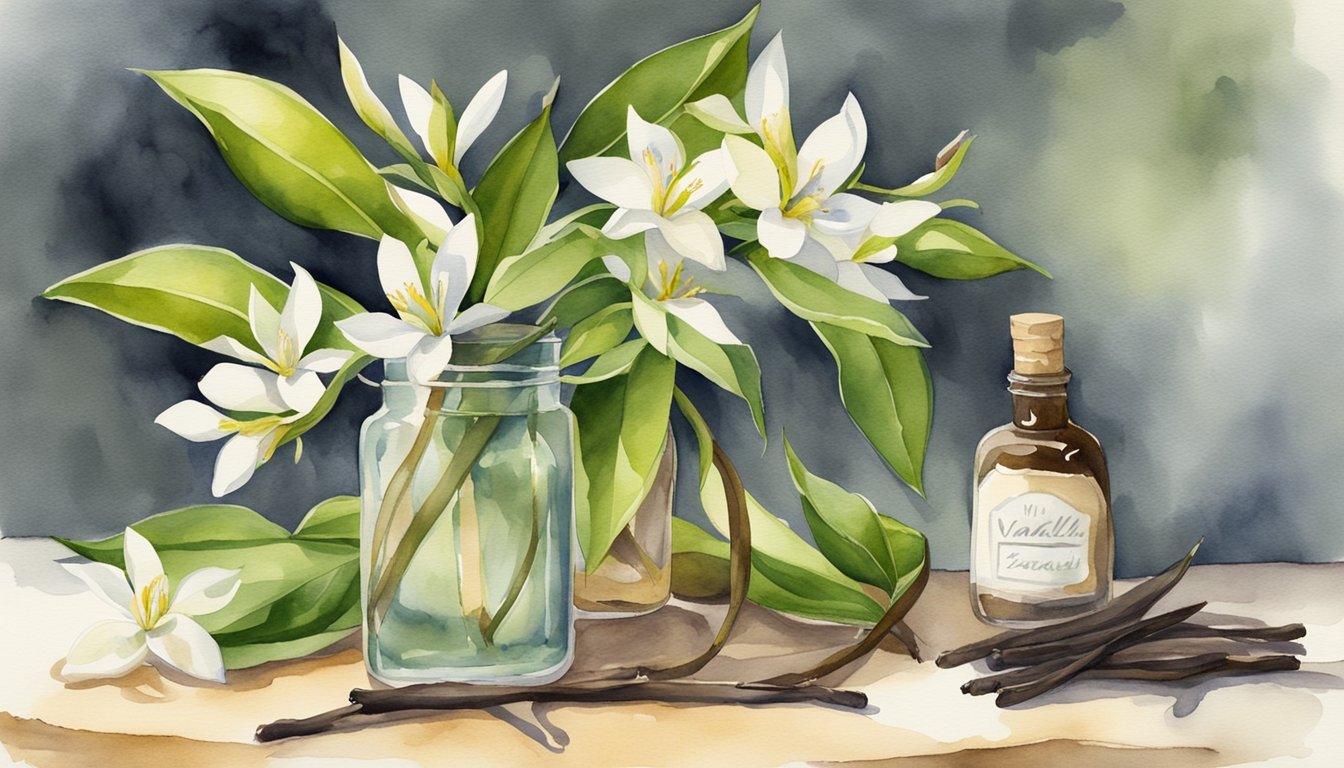Vanilla Origins and Cultivation
Vanilla, derived from orchids, is both a delicate flower and a complex spice, treasured since the era of the Aztecs. Its cultivation is a blend of ancient tradition and botanical expertise, involving a series of intricate steps that yield the world’s second most expensive spice after saffron.
Historical Significance
Vanilla’s history starts with the Totonac people of Mexico, who were the first to cultivate the Vanilla planifolia orchid. It was then passed to the Aztecs and later introduced to Europe by Hernán Cortés in the 16th century. The cultivation technique of hand-pollination, developed initially in Mexico, was essential to vanilla’s global propagation. Interestingly, a young slave named Edmond Albius, in Réunion, discovered this method that allowed vanilla to be cultivated worldwide.
Cultivation Techniques
The vanilla plant is a climbing orchid that requires a specific balance of shade, humidity, and careful handling during cultivation. The flowers must be hand-pollinated, a labor-intensive process, as natural pollinators like the Melipona bee are found only in Mexico. After pollination, vanilla beans take several months to mature and must be harvested by hand. The curing process, which involves drying and fermenting the beans, develops the vanilla’s characteristic flavor.
- Key Steps in Vanilla Cultivation:
- Growing vanilla orchids in the right conditions
- Hand-pollinating flowers within a short time frame
- Harvesting mature pods by hand
- Curing the beans through a rigorous procedure
Global Production and Varieties
Mexico once led vanilla production, but now Madagascar dominates the market with its signature Madagascar vanilla, also known as Bourbon vanilla. Different varieties include V. planifolia in Madagascar and Indonesia, V. tahitensis in Tahiti, and the rarer V. pompona found in the West Indies. Indonesian and Indian farmers also contribute significantly to the supply of natural vanilla. Each region’s soil and climate impart unique qualities to the beans, influencing the intricate balance of flavor compounds within the matured vanilla capsules.
Uses and Derivatives

Vanilla, cherished for its delightful flavor and aroma, finds its way into a vast array of products, from delectable desserts to aromatic perfumes. This section explores how vanilla, both in its pure form and as derived components, enhances various aspects of food, beverages, and even medicine.
Culinary Uses
In the culinary world, vanilla is a prized ingredient, with its extract being a staple in baking. The extract, produced by soaking cured vanilla beans in alcohol and water, imparts a rich flavor to cookies, cakes, and other baked goods. Beyond its use as a flavor enhancer, vanilla can be found in the form of whole pods, ground seeds, and even as a sugar-infused product. The versatility of vanilla makes it an essential ingredient in a wide range of dishes, adding a subtle complexity that can elevate a simple dish to an extraordinary one.
Vanilla in Beverages and Confections
Moving beyond food, vanilla plays a crucial role in beverages and confections. Vanilla’s delicate flavor profile adds depth to coffee and tea blends, while also being a key ingredient in many chocolate products, including hot cocoa and chocolate bars. Imitation vanilla, often derived from synthetic vanillin or via components like guaiacol, is frequently used in commercially produced beverages and confectioneries.
Aromatic and Medicinal Applications
Vanilla’s influence extends into the worlds of fragrance and wellness, too. Its pleasant aroma is not only used to enhance the scent profile of perfumes, but it also carries therapeutic properties. In traditional medicine, vanilla was utilized for its supposed ability to heal wounds and soothe burns. While some forms of synthetic vanilla are produced for flavoring, its pure form is often preferred in aromatherapy and holistic practices for its natural fragrance and purported health benefits.

